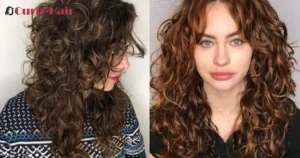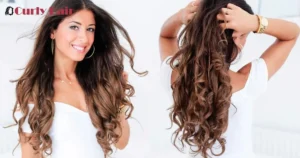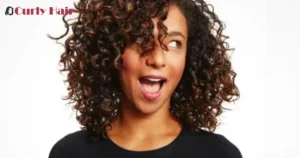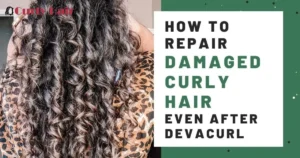Lice can be frustrating to remove from curly hair. Start by applying a lice treatment shampoo to the hair and scalp. Let it soak for 10 minutes. Use a nit comb to remove the dead lice and nits. It helps to section the hair and go through it in small parts. Rinse out the shampoo.
Dealing with lice in curly hair and finding a method of How to get lice out of curly hair? Don’t panic. Follow these tips on how to get lice out of curly hair and you’ll be nit-free in no time. Getting rid of head lice takes patience but it can be done.
Dealing with lice is never fun. Especially when you have naturally curly hair. The twists and coils make it harder to comb through and remove the nits. But getting rid of lice in curly hair is possible.
Key Takeaways
- Prioritize regular, careful combing for effective lice removal in curly hair.
- Opt for medicated shampoos and natural ingredients to treat and protect.
- Create a clean environment and encourage community awareness for prevention.
- Keep it simple; repeat the process consistently for a lice-free, happy curly hair.
What are head lice & nits?
Head lice are small insects that live on the human scalp, feeding on blood. They are often found in children, spreading through direct head-to-head contact. Adult lice are tiny, resembling sesame seeds in a greyish-white or tan color.
Nits, on the other hand, are the eggs laid by lice. These oval-shaped specks cling to hair shafts near the scalp and can be mistaken for dandruff. Nits hatch in approximately a week, giving rise to a new set of head lice. Despite resembling dandruff, they are more challenging to remove, posing a persistent issue in managing lice infestations.
Head Lice In Curly And Thick Hair
| Points | Description |
| Prevention | Regular combing, tied-up hair, and tea tree oil use. |
| Treatment | Medicated shampoos, fine-toothed comb, and conditioner. |
| Product Choice | Opt for natural ingredients; avoid excessive oils. |
| Environment | Maintain cleanliness to prevent lice infestation. |
| Community Awareness | Promote open communication about lice prevention. |
| Consistency is Key | Regular, simple steps ensure a lice-free environment. |
Dealing with head lice in curly and thick hair can be tricky. These pests love hiding in the twists and turns of curly hair, making detection a challenge. Regularly combing through the hair with a fine-toothed comb helps in catching and removing them early. Thick hair adds another layer of complexity.
Lice find cozy spots to settle in, making it harder to eliminate them. Using a specially formulated lice treatment and patiently combing through each section can effectively tackle the issue. In curly and thick hair, diligence and a systematic approach are key to successfully getting rid of these unwelcome guests.
Can Curly Hair Get Head Lice?
Yes, curly hair can get head lice. Lice don’t discriminate based on hair type. They’re tiny insects that live on the human scalp and feed on blood. Curly hair, straight hair, it doesn’t matter. Lice spread through close head-to-head contact.
So, if you’re in close quarters with someone who has lice, whether your hair is curly or not, you’re at risk. Keep an eye out for itching and tiny white eggs (nits) attached to hair strands, as they’re signs of a possible infestation.
More Difficult To Get Rid Of Head Lice
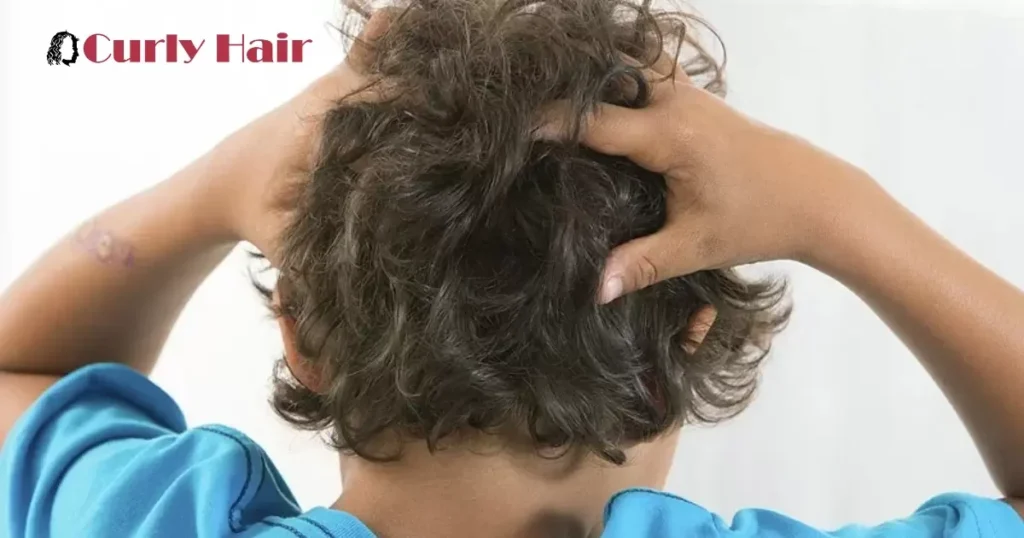
Head lice are stubborn pests. Traditional treatments often fail. Overuse of common remedies leads to resistance. Super lice, a tougher breed, are emerging. Preventing their spread is crucial. Regular checks are vital. Quick action prevents infestations. Comb thoroughly, and seek professional advice.
Schools and communities play a key role. Awareness campaigns are essential. Sharing combs and hats spreads lice. Teach kids to avoid such sharing. Combating head lice is a collective effort. Stay informed, act promptly, and break the cycle.
Do Lice Like Curly Hair?
Yes, lice don’t care if hair is straight or curly. They like hair, period. Curly hair might make it a bit trickier for them to move around, but it doesn’t stop them. They grab onto hair strands and stay close to the scalp, where it’s warm. So, whether your hair is curly or straight, lice can still find a cozy home.
When it comes to lice, what matters most is close contact. They spread through head-to-head contact, not hair type. So, whether it’s wavy or straight, lice just want a chance to move from one head to another. Remember, prevention is key avoid sharing combs or hats, and that goes for all hair types.
Do Lice Like Curly Or Straight Hair More?
Lice don’t pick favourites when it comes to hair type. They’re equal opportunity pests. Whether your hair is curly or straight, lice are happy to set up camp. These tiny critters don’t discriminate; they’re just looking for a cosy scalp to call home. So, whether your locks are curly whirls or straight strands, lice couldn’t care less.
The texture of your hair doesn’t matter to lice; they’re more interested in a warm head to settle on. So, whether your hair dances in curls or flows in a straight line, these tiny freeloaders are ready for the party. Keep your guard up, because lice don’t play favourites in the world of hairdos.
How To Get Lice Eggs Out Of Curly Hair?
Firstly, dampen the hair with water. Apply a generous amount of conditioner, ensuring all strands are covered. Use a fine-tooth comb to carefully detangle, starting from the roots. Repeat this process daily until no more eggs are found.
Next, laundry matters. Wash all bedding, clothing, and personal items in hot water. Dry them on high heat. This helps eliminate any stray lice or eggs. The function of beauty is good for curly hair. Regularly check and repeat these steps to keep those nits at bay.
Causes Of Head Lice Infestation
Head lice infestation is mainly caused by direct head-to-head contact with an infected person. These tiny insects crawl quickly from one person’s hair to another, particularly in crowded environments like schools.
Sharing personal items like combs, brushes, and hats can also spread lice. Lice do not have wings and cannot jump, but they move efficiently on hair strands, making close contact a primary mode of transmission. Understanding these simple ways of transmission can help in preventing and managing head lice infestations.
Symptoms Of Head Lice
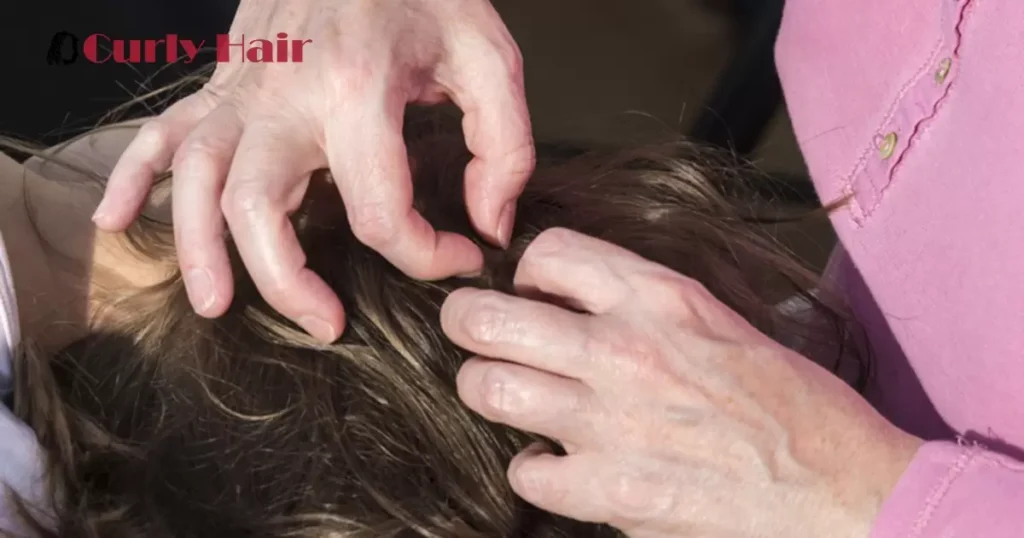
Head lice cause itchiness. Small insects live on the scalp. They lay eggs called nits. Scratching may lead to sores. Nits attach to hair strands. Adult lice feed on blood. Red bumps appear on the neck. Check for lice regularly.
Lice spread through head-to-head contact. Sharing combs or hats transfers them. It’s common among children. Lice-killing products offer swift treatment, stopping further spread. Regular checks prevent infestations.
Environmental Control To Prevent Lice Reinfestation
To stop lice from coming back, control the environment. Wash bedding and clothes regularly. Vacuum and clean living spaces thoroughly. Keep personal items separate to avoid spreading. Additionally, educate others on prevention methods to curb the spread.
Prevent reinfestation by addressing the source. Treat everyone simultaneously to eliminate curly hair lice. Check and comb hair regularly to catch any lingering pests. Maintain a clean environment for a lice-free life. Encourage open communication about lice prevention in your community.
How Do You Get Rid Of Nits In Curly Hair?
Getting rid of nits in curly hair is straightforward. Start by wetting the hair and applying a generous amount of conditioner. This helps in detangling and makes it easier to comb through the hair. Gently comb from root to tip, focusing on one section at a time, and rinse thoroughly to ensure all nits are washed away.
Next, use a fine-toothed comb to carefully go through small sections of the hair, removing nits and lice. Make sure to wipe the comb after each pass to get rid of any captured critters. Repeat this process regularly to break the life cycle and keep those nits at bay. Remember, patience is key when dealing with curly hair and nits.
Lice Treatment For Thick Curly Hair
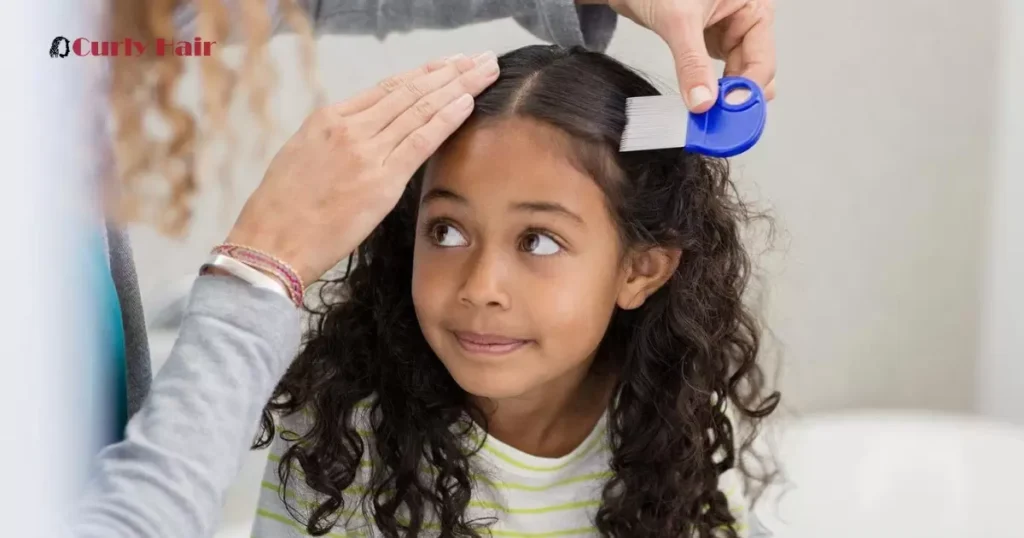
Dealing with lice in thick, curly hair demands careful attention. First, choose a fine-toothed comb to navigate through the dense curls. Apply a generous amount of conditioner to make combing smoother. For an effective treatment, opt for a medicated lice shampoo. Ensure thorough coverage, focusing on the scalp. Repeat the process every 7-10 days to break the lice life cycle.
Keep it simple, comb and shampoo for a lice-free, happy hair. When applying the conditioner, let it sit for a few minutes before combing to detangle and soften the hair. This helps the comb move through the curls with ease, making the overall process more effective.
Combing
Combing is key for lice treatment in thick, curly hair. Choose a fine-toothed comb to navigate through dense curls, ensuring you cover the entire scalp. Apply a generous conditioner to detangle and soften the hair, allowing the comb to move smoothly. Repeat this simple combing routine every 7-10 days to break the lice life cycle and keep your hair happy and lice-free.
Blow Dryer
After lice treatment for thick, curly hair, consider using a blow dryer on low heat. This helps to ensure the hair is completely dry, a key step in preventing lice. Focus on the roots and scalp while using the dryer to eliminate any remaining moisture. A gentle blow dry adds an extra layer of defense in maintaining lice-free, healthy curls.
Chemicals
When choosing lice treatment for thick, curly hair, be mindful of the chemicals. Opt for products with safe and effective ingredients. Look for shampoos containing pyrethrin or permethrin, proven to combat lice. Prioritize solutions that are gentle on your hair while tough on those unwanted visitors.
Protect Curly Or Thick Hair From Head Lice
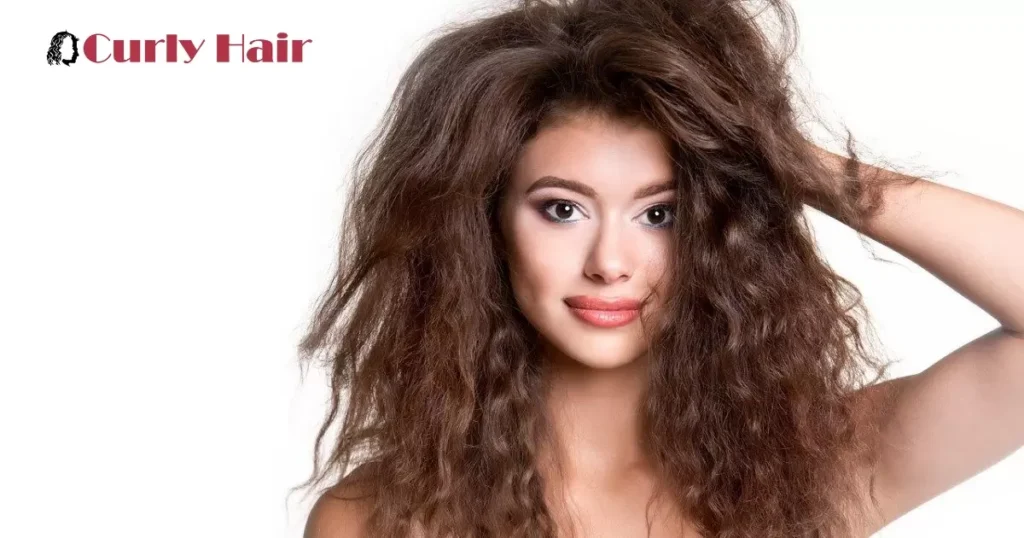
To get rid of lice and safeguard curly or thick hair from these pests, start with prevention. Regularly use a fine-toothed comb to detect and remove any potential intruders. Incorporate tea tree oil into your hair care routine, known for its repellent properties against lice. Keep hair tied up when possible, reducing the risk of contact with lice.
Choose hair products wisely; opt for those with natural ingredients and avoid excessive use of oil-based styling products. Educate others about lice prevention to minimize the risk of exposure. Taking these simple steps can help maintain the health and beauty of your curly or thick hair.
Head Lice Removal & Prevention For Curls
To effectively remove head lice from curly hair, start by applying a specialized lice treatment shampoo or oil. Thoroughly comb through damp hair with a fine-toothed comb to remove both lice and their eggs. Repeat this process every few days to ensure complete eradication.
Prevention is key to avoiding future infestations. Regularly check for lice by inspecting the scalp and hair strands. Encourage children to avoid sharing hats, brushes, and hair accessories to minimize the risk of spreading lice. Keep hair tied back and apply a small amount of tea tree oil to the scalp as a natural deterrent.
What Kills Lice Eggs?
Lice eggs, also known as nits, can be effectively killed with treatments that contain insecticides like permethrin or pyrethrin. These substances target the nervous system of lice and their eggs, effectively eliminating them. Natural remedies such as tea tree oil or neem oil are also effective alternatives, suffocating the eggs and preventing them from hatching.
To ensure all eggs are eradicated, thorough combing with a fine-toothed nit comb is essential after treatment. This helps remove any remaining eggs from the hair shafts. Washing bedding, hats, and clothing in hot water and drying them on high heat can prevent re-infestation by killing any stray eggs.
Lice Treatment At Home
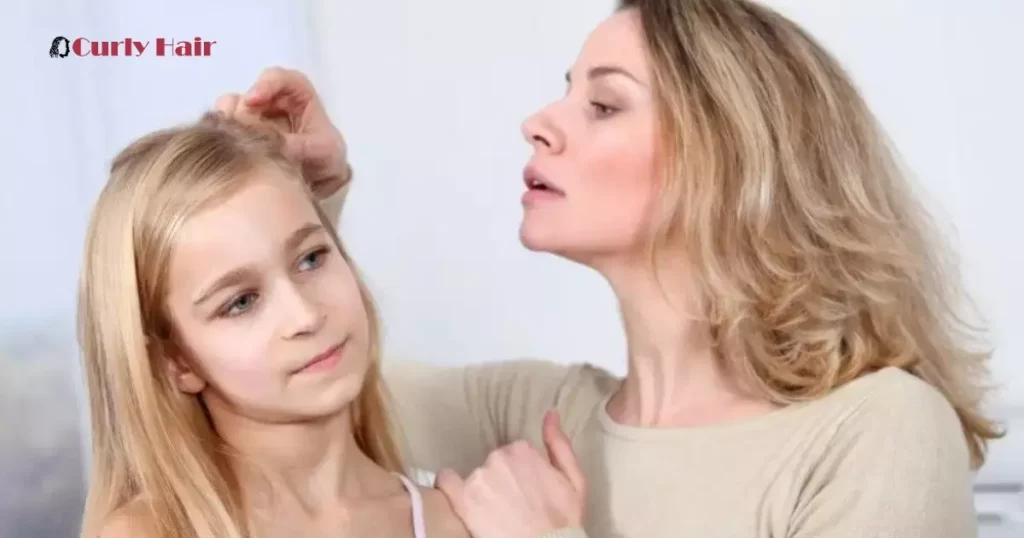
To tackle lice at home, start with a fine-tooth comb. This helps remove lice and nits from curly hair effectively. Comb small sections, ensuring thorough coverage from roots to tips.
Next, consider natural treatments like tea tree oil. This oil has antimicrobial properties that can help kill lice. Apply it diluted with water to avoid scalp irritation. Wash bedding and clothes in hot water to prevent re-infestation.
Lice In Curly Hair
Lice can easily hide in curly hair due to its texture and thickness. They cling to hair strands close to the scalp where it’s warm.
Regularly checking for lice and nits is crucial for early detection. Use a fine-tooth comb to remove lice and their eggs carefully from curly hair.
Curl Maven Head Lice Treatment For Curly Hair
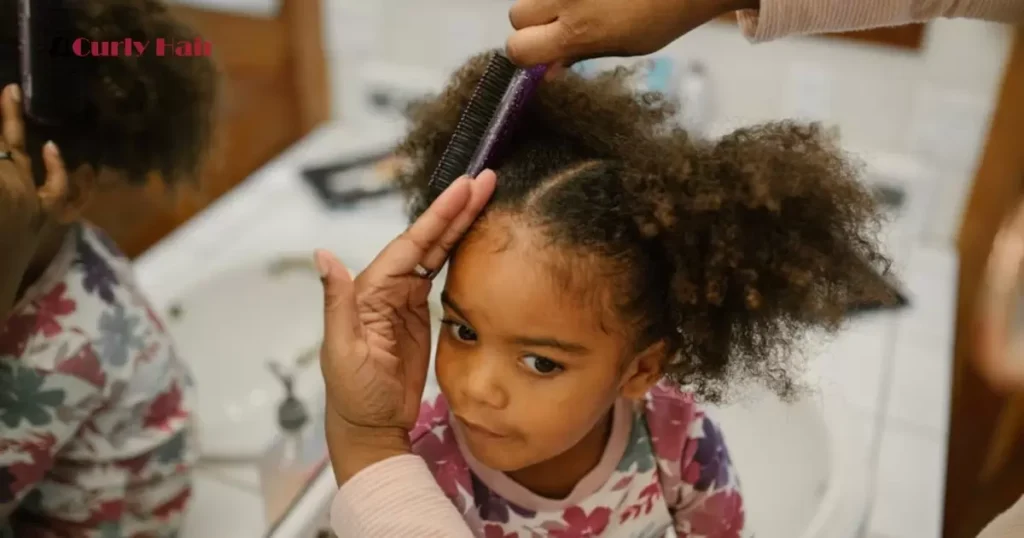
Curl Maven offers a specialized treatment for dealing with head lice in curly hair. Their approach focuses on gentle yet effective removal without causing damage. This treatment is tailored to maintain the health and texture of curls while eliminating lice.
Using Curl Maven’s products ensures that curly hair receives proper care during the lice removal process. Their treatment regimen includes steps to ensure thorough removal without compromising the natural integrity of curls.
Frequently Asked Question
Is it hard to get lice out of curly hair?
Yes, removing lice from curly hair can be challenging due to the hair’s density and texture. However, with proper combing and the right products, it can be effectively managed.
What is the fastest way to get rid of lice in your hair?
Use a medicated lice shampoo for the fastest results. Comb through the hair thoroughly to remove any remaining lice and their eggs.
What do lice eggs look like in curly hair?
In curly hair, lice eggs, or nits, appear as tiny, oval-shaped whitish or yellowish dots attached close to the hair shafts.
Conclusion
Wondering how to get lice out of curly hair? Simple steps make it manageable. Comb through with care, opt for effective lice shampoo, and repeat regularly.
Choose products wisely, incorporating natural elements for curly hair protection. Embrace open dialogue for community-wide prevention. In a nutshell, simplicity conquers the challenge of lice in curly hair.



